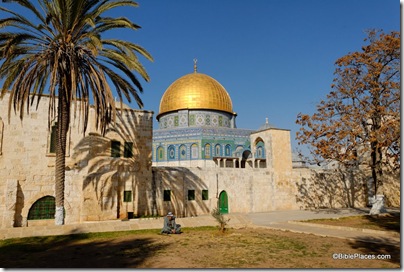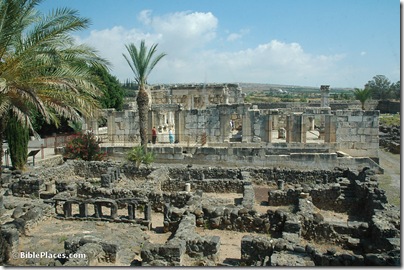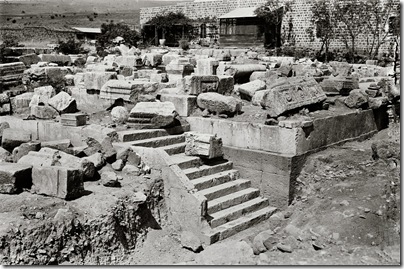Some months ago I learned about a new Virtual Walking Tour of al-Haram al-Sharif (the Temple Mount), but being short of time, I filed it for later. Today seems to be a slow news day and so I started it up and enjoyed the tour. It is excellent.
Created by Saudi Aramco World, the tour focuses on the present Muslim structures at the site, but it does not deny the previous existence of the two Jewish temples.
The tour begins with a five-minute narrated introduction (which you can skip) and then includes 32 360-degree panoramic views, each of which is explained both by an audio recording and a written transcript.
The visitor starts with two views of the Temple Mount from the east and west before surveying the grounds of the complex with approximately 18 more scenes. A particularly unique image is #25, taken atop Al-Aqsa Mosque.
Tourists to Israel today can see most of these views if they visit during the open hours of the Temple Mount (approximately Sun-Thurs, 7:30-10:00 am, 12:30-1:30 pm), but since 2000 the holy buildings have been closed to non-Muslims. Thus the images inside the Dome of the Rock and Al-Aqsa Mosque will be especially appreciated by those who have been denied entrance.
A couple of practical comments: 1) You can turn the audio off and read the text; 2) the full-screen view is very high quality, but may be slow on your internet connection; 3) to get “inside” the Dome of the Rock, select #8 and new options will become available; 4) to get “inside” Al-Aqsa Mosque, select #26.
The creators did a fantastic job with this. The photography is superb, the narration is helpful, and the location is one of the most religiously (and politically) important in the world.


